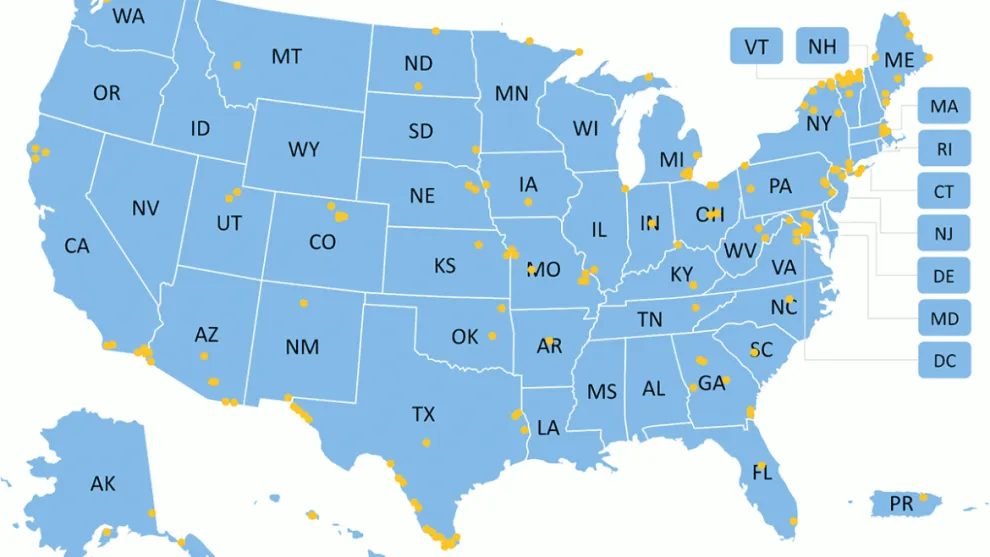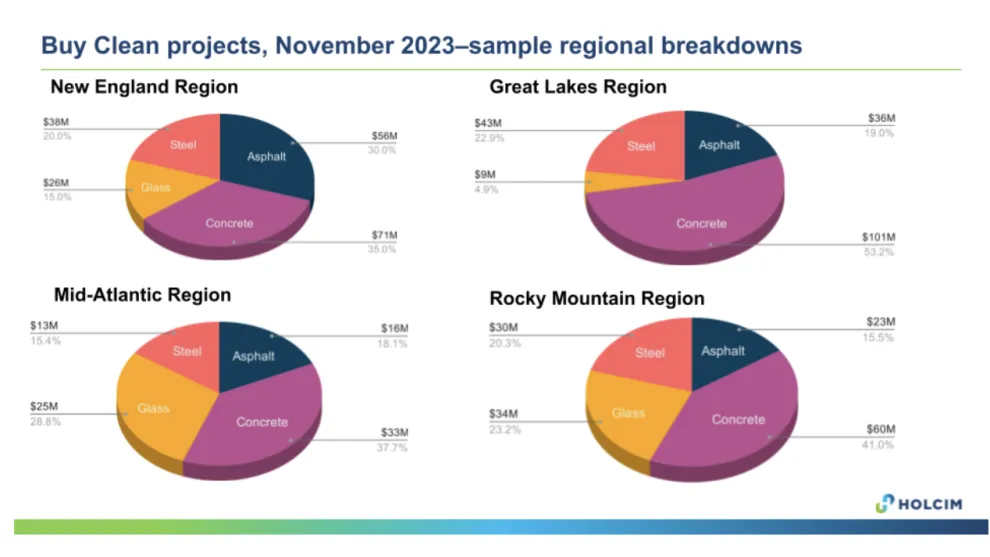HOLCIM US POSITIONED TO MEET SURGING SUSTAINABLE BUILDING DEMANDS IN 2024
In November 2023, the U.S. General Services Administration (GSA) announced a $2 billion investment in more than 150 construction projects that use cleaner construction materials, known as “low-embodied carbon” materials. This investment was made possible by passage of the Inflation Reduction Act, which included $3.375 billion for GSA to invest in buildings, primarily through federally-funded construction projects that use low-embodied carbon asphalt, concrete, glass and steel.
The GSA announcement covered projects across 39 states, the District of Columbia, and the Commonwealth of Puerto Rico and will catalyze the market for Holcim’s low-carbon product line.

Holcim has been preparing for this market shift, analyzing our performance and developing product lines that prove that cement, concrete and asphalt are critical sustainable solutions.
- Each of our products at each of our facilities comes with a full-researched Environmental Product Declaration (EPD) that allows federal procurement officers to easily compare the environmental performance of our product to our competitors’ offerings. EPDs are a baseline requirement for bids on these new projects, and Holcim can offer them across our product line. See our EPDs here.
- Based on our green formulation expertise, Holcim’s OneCem is manufactured with quality limestone and uses less clinker than traditional ordinary portland cement (OPC), reducing CO2 emissions by 5to 10 percent per ton of cement. We are making low-carbon cement the standard by shifting all our US plants (12 of 13 so far) to produce OneCem exclusively. This transition translated into approximately 1.5 million metric tons of CO2 saved in 2023.
- Going further, we were market leaders with our introduction of green solutions such as ECOPlanet and ECOPact low-carbon offerings.
The scale of Buy Clean investments in low-carbon cement is significant, depending on the region. A sample set of regional breakdowns shows a $101 million investment in the Great Lakes region, and $60 million in the Rocky Mountain region. Additional regional analyses can be found here.

Asphalt, concrete, glass and steel are some of the most carbon-intensive construction materials–accounting for nearly half of all U.S. manufacturing greenhouse gas emissions, and representing 98 percent of the construction materials purchased and funded by the government for its infrastructure investments. We welcome this significant federal investment in the future of our industry, and are looking forward to helping the nation make progress for people and the planet.





